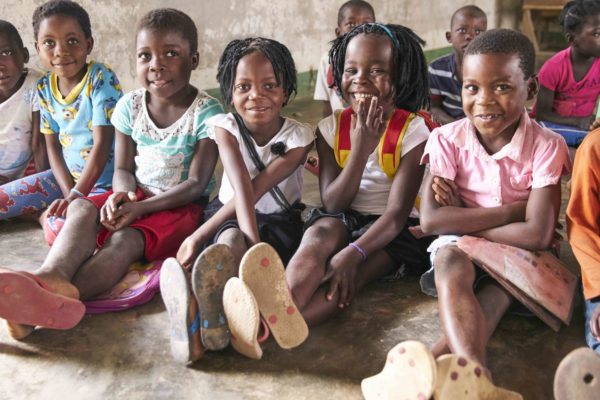A new strategy will guide the U.S. government’s work in international education. Officially launched Nov. 15 at the Council on Foreign Relations, the U.S. Government Strategy on International Basic Education aims to support programming that improves learning outcomes and expands access to quality basic education, particularly for marginalized and vulnerable populations.
Its overarching goal is to “achieve a world where education systems in partner countries enable all individuals to acquire the education and skills needed to be productive members of society.”
In 2018, education and social services programming accounted from $1.08 billion of U.S. foreign assistance, $713.13 million of which went toward basic education.
With a focus on country ownership, working holistically, innovative financing, data-based decision-making and technology, the strategy will influence U.S. government education interventions in 98 countries.
We asked Creative’s Education in Conflict Director Eileen St. George about her top takeaways from the new strategy and what to watch for in international education programming.
Read her answers below.
1. Education for resilience and self-reliance
Education is a cornerstone to building national resilience and supporting countries in achieving self-reliance, as such it needs to provide accessibility, equity, relevance and quality. The U.S. government (USG) strategy touts the evidence behind the ripple effect of education on economic growth, democratic governance, health and reduction in conflict.
2. Shared commitment to the READ Act
The READ Act (Reinforcing Education Accountability in Development Act) and the accompanying USG strategy is historic in its coordination of ten significant USG actors around a shared commitment and collaboration to increase global development impact through education. We hope this type of commitment and collaboration will extend to an increase in multi-sectoral approached necessary to build resilience.

3. Whole child, whole teacher focus
The strategy reminds us of the importance in addressing the whole child and that the overall well-being of the child is highly relevant to achieving our education objectives that support positive development of young citizens. Thus, the strategy calls upon us to remove silos and foster better, more integrated approaches.
Additionally, there is a growing appreciation for looking more holistically at the support needs of teachers that result in greater motivation and performance, and that standalone training solutions are a thing of the past.
4. Data, data, data
The focus on data-driven dialogue is welcomed to advance critical stakeholder discussions that foster greater transparency and accountability in the identification of barriers, opportunities, strategies and solutions.
Using data, critical stakeholders have a greater chance to recognize inequities, inefficiencies and achievements in the provision of education services, especially if we are to reach the most marginalized and vulnerable.
5. Innovation in the school-to-work transition
Bringing greater emphasis to the School-to-Work transition is welcome to ensure that thriving students have a viable pathway to become thriving citizens. Given the vast size of the youth bulge challenge we do need to look beyond the four-walls solution to educate youth and become increasingly more innovative in approaches to foster skills and competencies in youth that result in economic solutions for themselves and their families.
6. Don’t forget the family and community
The disparities in education and opportunities remain great around the globe. Vast gaps persist in foundational reading and math proficiency, with evidence of gross inequities attributed to factors that include gender, special needs, geography, and economic status. Such inequities are exacerbated further by conflict and crisis.
Creative would reinforce the emphasis on the family and community and the role they play beyond supporting access to schooling to active engagement in their child’s development and learning gains at home and in the community. Their role in promoting safe, protective and nurturing environments at school, home and community is paramount.
7. Creative ready to support
Creative offers support to the Senior Coordinator for International Basic Education Assistance, the Advisory Group, the Interagency Working Group, Missions and host country governments toward the shared goal of eliminating barriers to quality, safety, equity and access to relevant education opportunities to the 100 million children and youth who remain illiterate and the 387 million children and youth whose education systems have failed in enabling them to achieve reading and math proficiency.